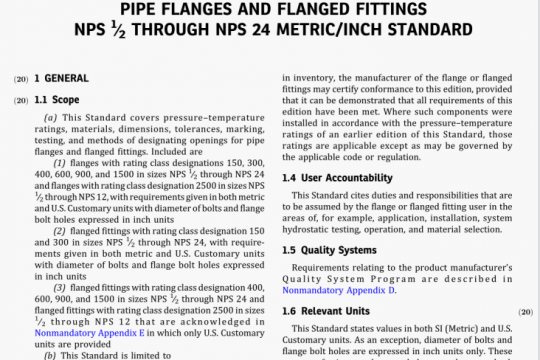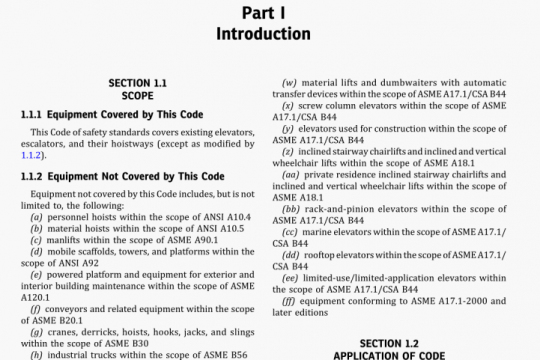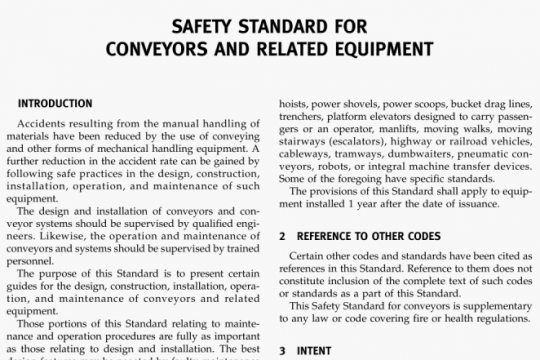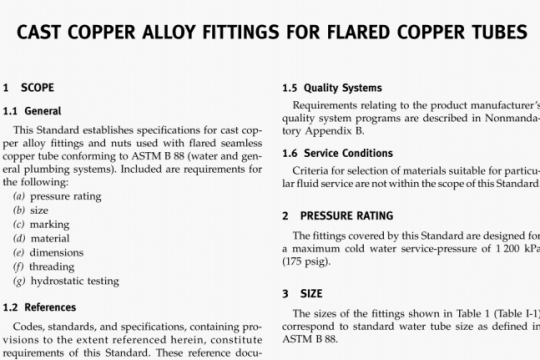ASME B16.3-2006 pdf free
ASME B16.3-2006 pdf free.Malleable lron Threaded Fittings.
6 DIMENSIONS AND TOLERANCES
6.1 General
The tolerances in Tables 2 and 1-2 are for center-to-end dimensions of the fittings. Center-to-end dimensions in millimeters are given for both straight and reducing fittings in Tables 3 through 18 (Tables 1-3 through 1-18 are in U.S. Customary units). The sketches of fittings shown in this Standard are representative and for the purpose of illustration.
6.2 Reducing Fittings
The dimensions in Tables 3 through 18 (Tables 1-3 through 1-18) of reducing fittings are for use only when making patterns for the specific reducing fitting in question and do not apply when a larger size pattern is bushed to make the reducing fitting wanted.
6.3 Tolerances
it is recognized that some variations are absolutely unavoidable in the making of patterns and castings. The following tolerances shall apply.
(a) Metal Thickness Tolerances. Metal thickness at no point in the castings shall be less than 90% of the value given in the tables.
(b) Center-to-End Tokrances. Permitted tolerances on the center-to-end dimensions of the fittings are shown in Tables 2 and 1-2. Tolerances for end-to-end dimensions and lengths of couplings and reducers shall be twice those given. The largest opening in a reducing fitting governs the tolerances to be applied to all openings. These tolerances do not apply to return bends and caps.
7 THREADING
7.1 Types of Threads
All fittings shall be threaded according to ASME Bl.20.l and shall have taper threads, except wrought couplings (Tables 8 and 1-8) and wrought caps (Tables 9 and 1-9) in NPS !4, and %, which may have straight threads.
7.2 Tolerances
Variations in taper threading shall be limited to one turn large or one turn small from the gaging face on ring and gaging notch on plug when using working gages. The variations in straight threading shall be limited to one and one-half turns large or small from the gaging notch on plug when using a taper pipe thread working gage. The reference point for gaging internal fittings threads depends upon the chamfer diameter. When the internal chamfer diameter exceeds the major diameter of the internal thread, the reference point is the last thread scratch on the chamfer cone. When the internal chamfer diameter does not exceed the major diameter of the internal thread, the reference point is the end of the fitting. (See Fig. 2.)
7.3 Countersink or Chamfer
For the purpose of easier entrance in making a joint and for protection of the thread, all internal threads shall be countersunk a distance of not less than one-half the pitch of the thread at an angle of approximately 45 deg with the axis of the thread; all external threads shall be chamfered at an angle of 30 deg to 45 deg with the axis. Countersinking and chamfering shall be concentric with the threads.ASME B16.3 pdf free download.




